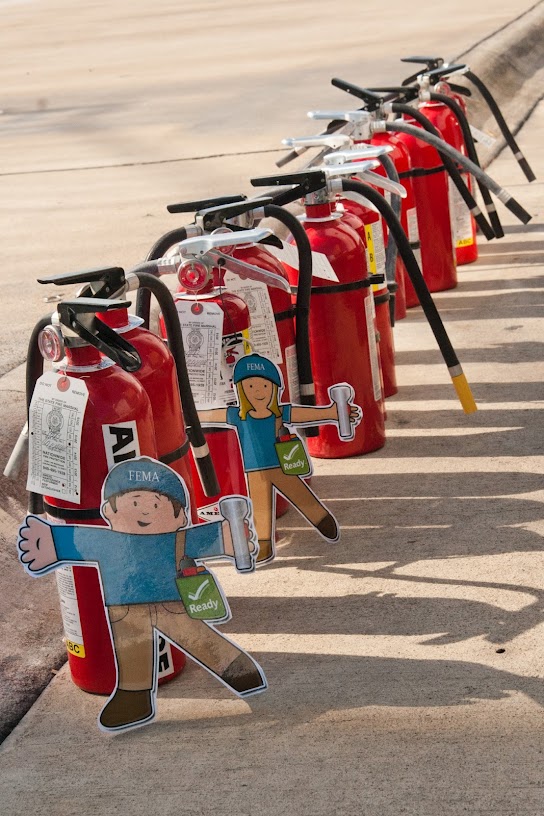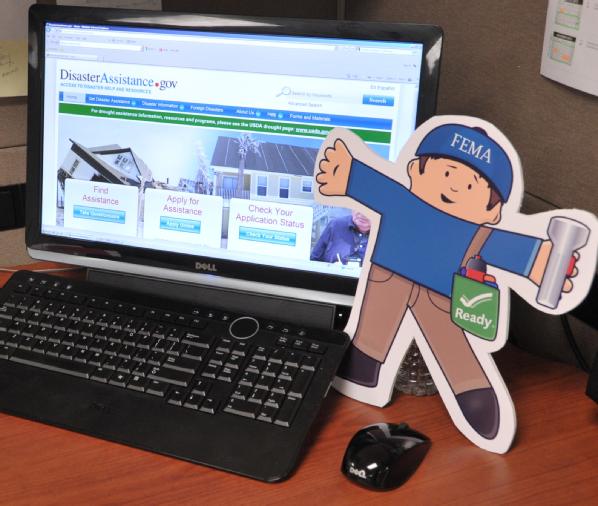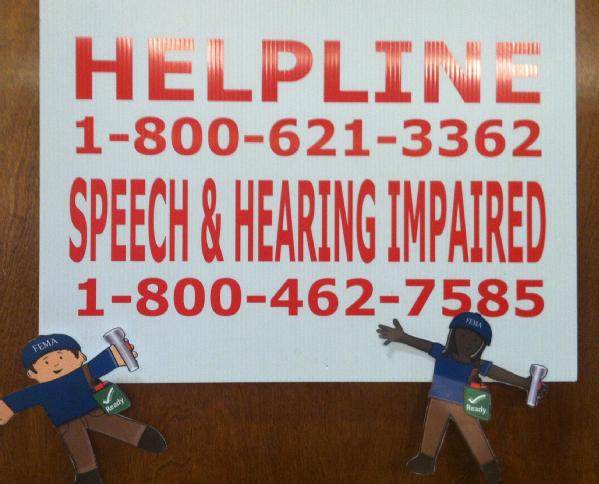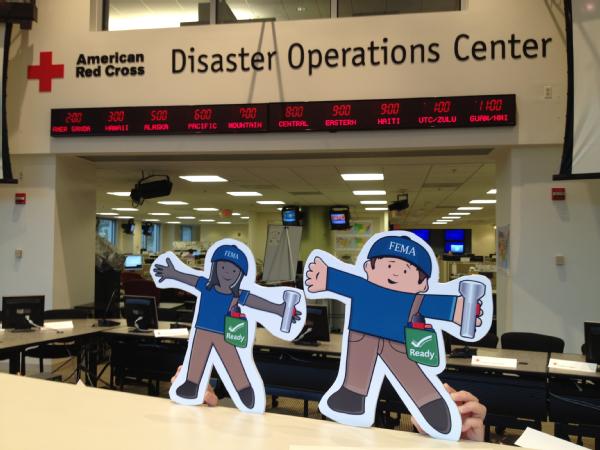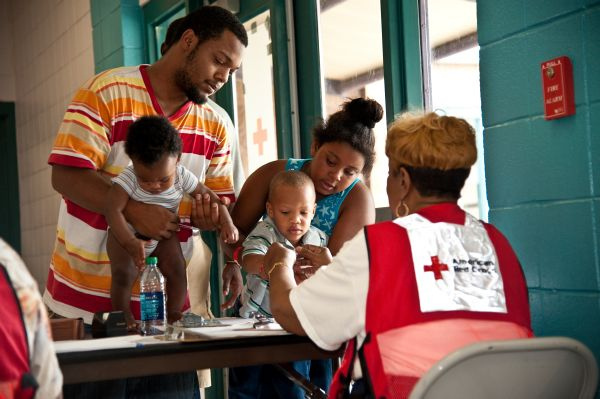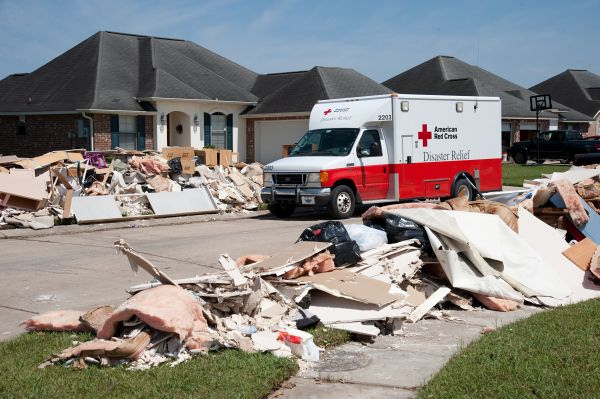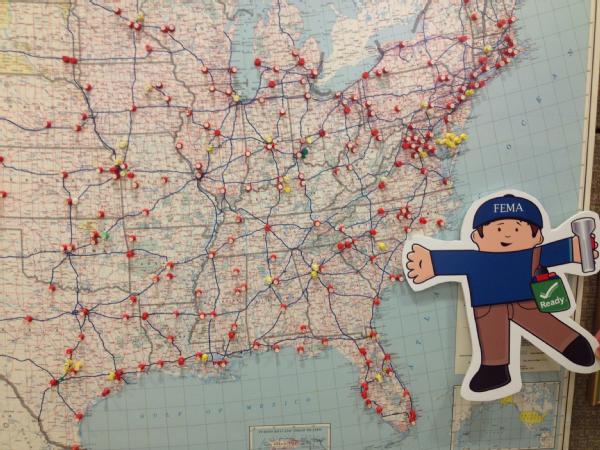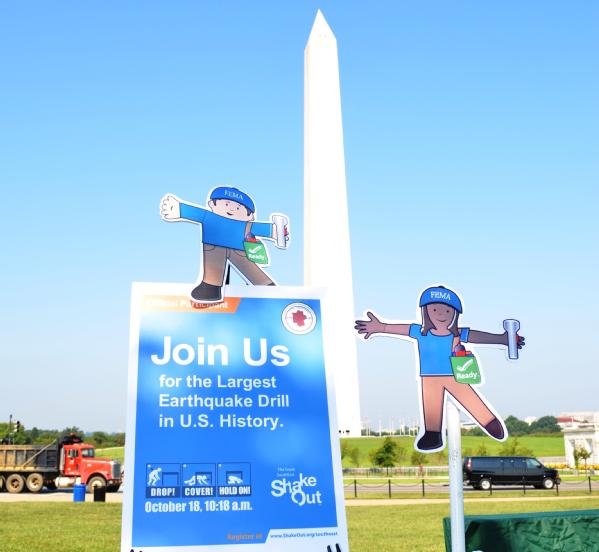Our First Visit to a State Emergency Management Office
Did you know every state has its own emergency management office? A lot of big cities do too. We got to check out the Washington, D.C. Homeland Security and Emergency Management Agency (D.C. HSEMA) and we learned a lot about the important work people do at these offices every day.
First, HSEMA let us peek into their Emergency Operations Center. Even though the room was empty, when there’s an emergency, it’s filled with people busy working to make things better. The room fills with people from lots of different places -- federal agencies like FEMA, businesses like power companies, and volunteer groups like the American Red Cross. Everyone has a chair at the table and is part of the team! When everyone works together in the same room, it’s a lot easier to talk about emergencies and solve problems.

The Emergency Operations Center also has a lot of monitors. These screens help state and local emergency managers stay aware of current road conditions, watch the approaching weather, and see video of impacted areas.
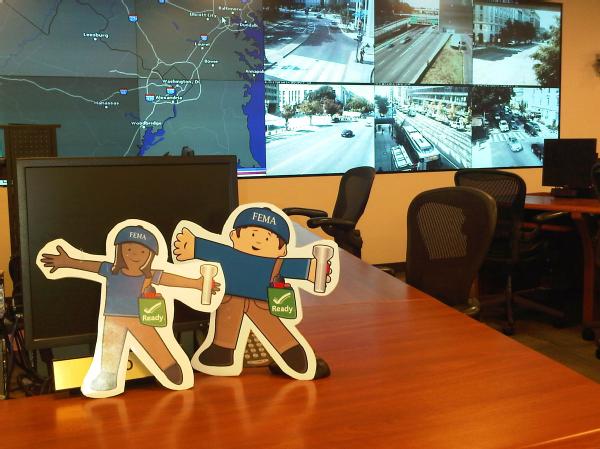
D.C. HSEMA doesn’t just manage emergencies in their building – they take it to the streets! We rode in their mobile emergency operations center, which is a big vehicle with radios and equipment so they can manage the emergency from anywhere.

For our last stop, we learned about the work D.C. HSEMA does day-to-day even when there isn’t a big disaster. We toured the city’s 9-1-1 Call Center, a big room with people that answer emergency calls. These people are called dispatchers, and they answer hundreds of calls every day. They then talk on the radio with local police officers and fire departments who respond to that person’s emergency. We were so impressed by how calmly the dispatchers responded to each person’s call for help.

We also learned that D.C. is one of only a few places that use Smart 9-1-1. Smart 9-1-1 is a system that allows citizens to create a safety profile with information such as medical conditions and medications, if anyone in their household has access or functional needs, and other information that would be helpful for first responders to know when responding to their emergency. When a citizen calls 9-1-1, all of this information pops up on the dispatcher’s screen. This helps save time -- and lives. It’s free for citizens to use, so we encourage everyone to create their own Smart 9-1-1 safety profile as part of their steps to get prepared for an emergency.
If you live in the nation’s capital and want to stay informed, you can download HSEMA’s app on your phone. Their smartphone app provides information about current alerts and warnings, preparedness tips, and how to respond to emergencies. They even link to FEMA’s smartphone app!
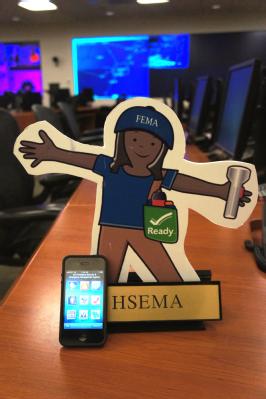
Our visit to the D.C. emergency management office was very educational and we learned a lot about the important work our state partners do every day. We can’t wait to visit our next emergency operations center. Tell us where you think we should visit next!


